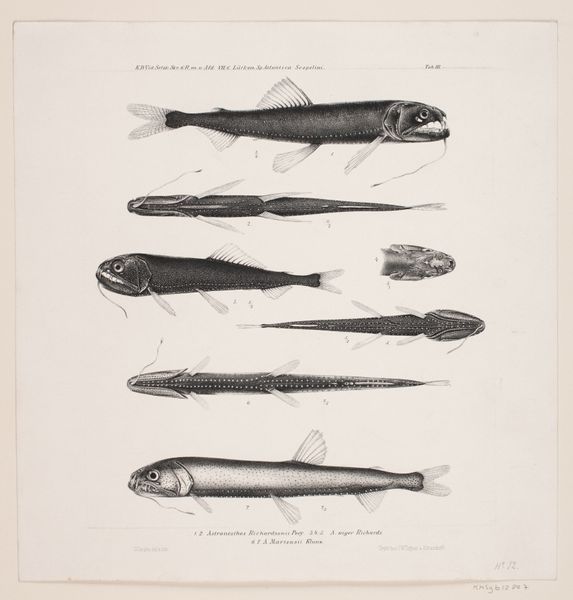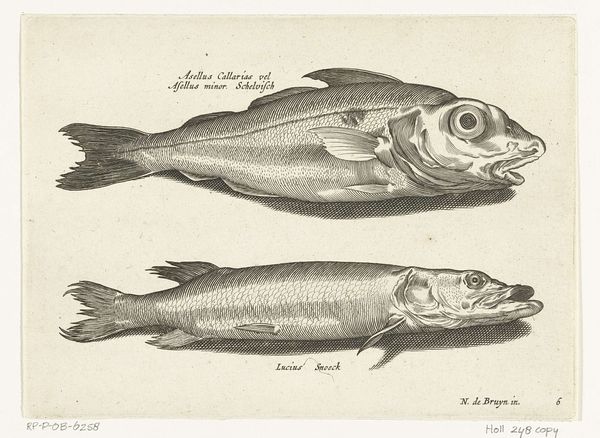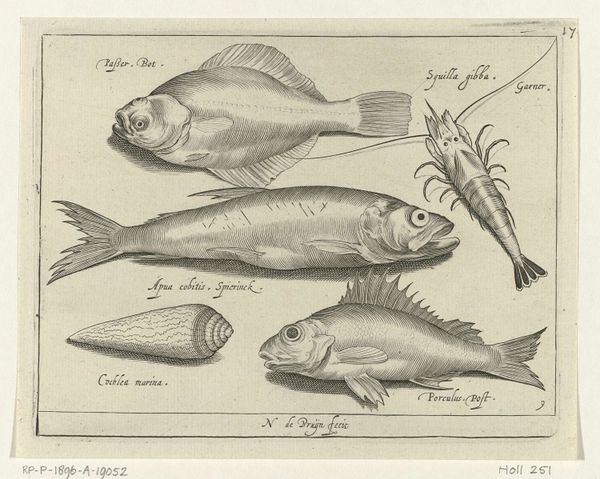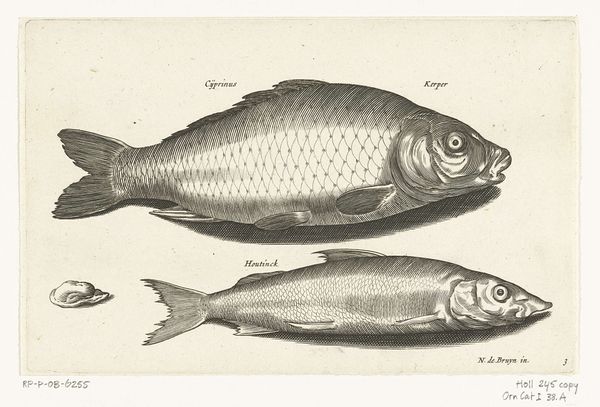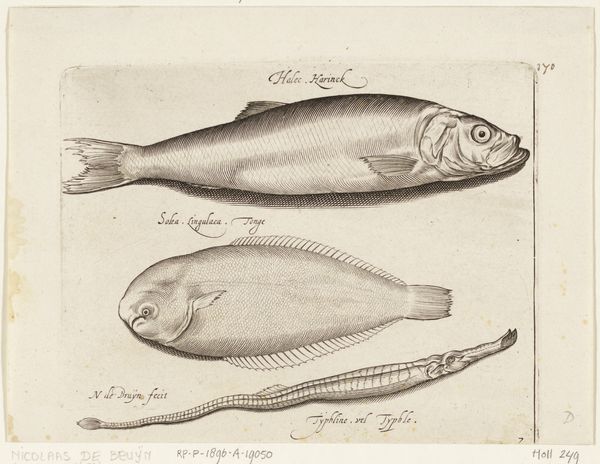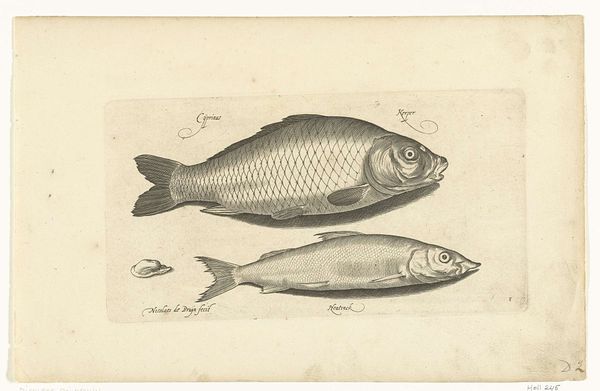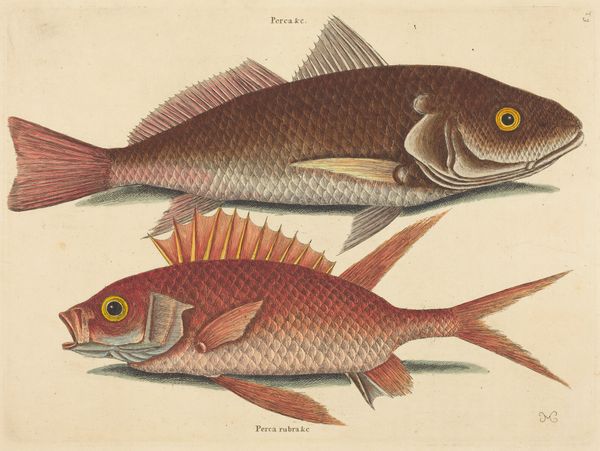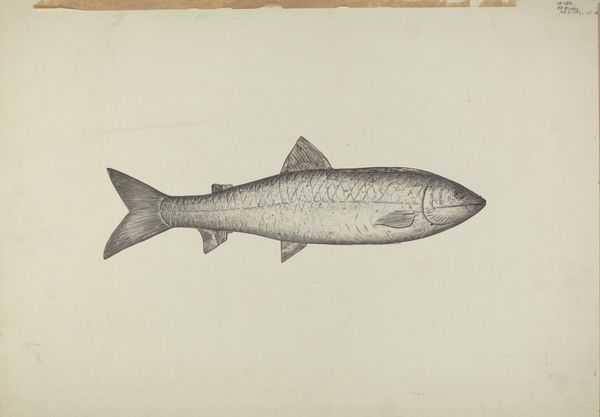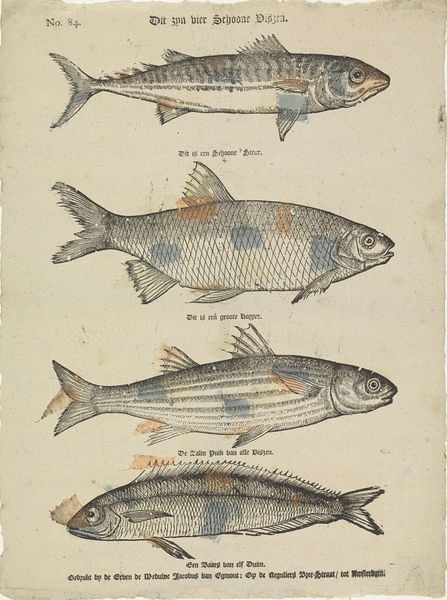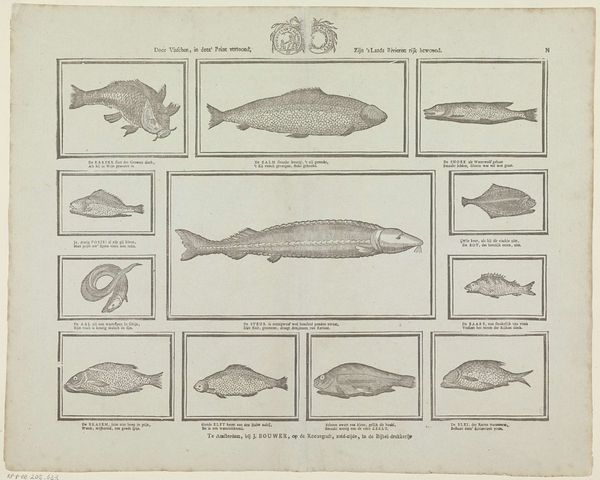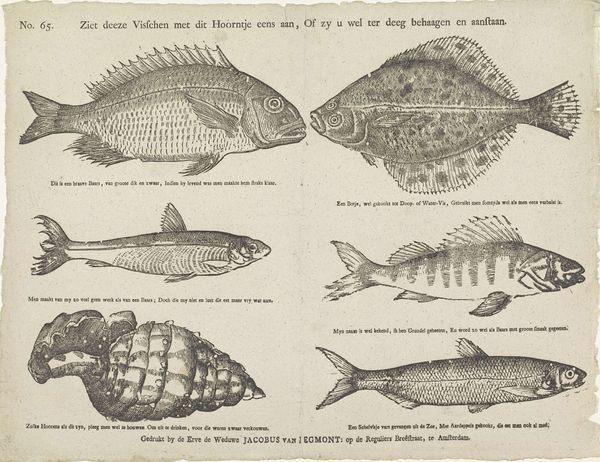
drawing, lithograph, print, graphite
#
drawing
#
lithograph
# print
#
graphite
#
realism
Dimensions: 270 mm (height) x 240 mm (width) (bladmaal)
Editor: We’re looking at "Naturhistorisk tegning," a drawing made sometime between 1844 and 1910 by Carl Christian Larsen Cordts. It's a lithograph, print and drawing in graphite, depicting several fish specimens. What strikes me is its objective style, almost clinical. What does this image say to you? Curator: Well, beyond the obvious scientific intentions, these types of natural history drawings, reproduced as lithographs, played a huge role in democratizing knowledge. Think about it: before photography became readily available, how else could a wider audience access visual information about the natural world? This print served an important public role. Editor: That makes a lot of sense. I hadn’t considered how limited access to visual information must have been back then. Was there a particular socio-political agenda tied to making knowledge more accessible? Curator: Absolutely. This era saw a rise in scientific exploration and a growing interest in categorizing and understanding the world, a mindset influenced by colonialism and resource management. The precise detail in Cordts' work reflected a desire for empirical evidence. Consider the museum context, where these specimens might be displayed alongside these images - shaping a certain perception of the natural world for the public. Editor: So the museum isn't a neutral space then; it actively shapes the viewer's perception through what is shown and how it is shown? Curator: Precisely! It's crucial to think about the politics of display and knowledge production when we encounter images like this. They weren’t just passive reflections of reality, but active agents in shaping how people understood the world. Editor: I guess I assumed that objective images were free from any kind of perspective or social agenda. Thank you for pointing this out. Curator: My pleasure. The politics of imagery are all around us if you know where to look!
Comments
No comments
Be the first to comment and join the conversation on the ultimate creative platform.
